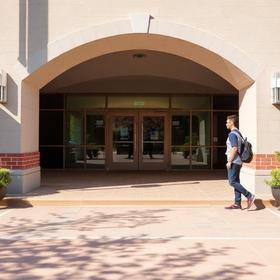Hidden Scholarship & Financial Aid Programs at Private Schools in 2025
Affording private school tuition remains a significant concern for many families. Yet for those willing to dig a little deeper, hidden scholarship & financial aid options are becoming more accessible in 2025. From state-level voucher programs to niche nonprofit funds and internal private school aid pools, prospective parents and students now have more pathways to fund a private education than ever before. This article will break down what these lesser-advertised opportunities look like, who they serve, how to access them, and tips for maximizing success.
Why hidden programs matter
Many families assume that private school scholarships are limited to academic or athletic merit and only available at elite institutions. In 2025, however, the landscape is shifting:
Traditional aid often gets publicly marketed; hidden programs are less visible but can offer substantial relief for families who fall outside the classic “income < X” bracket.
These programs frequently target students from under-represented populations: first-generation learners, students with learning differences, military families, or those from diverse racial/ethnic backgrounds.
In some states, portability (voucher/ESA) or tax-credit scholarships allow funds to follow the student rather than tying them to one school.
Awareness is the key barrier: many families simply don’t know the programs exist. As one recent article noted, “The more parents, students and educators know, the better.”Private School Review
In short, discovering and leveraging hidden scholarship & financial aid options can turn private school from a distant possibility into a legitimate opportunity.
Current Tuition Context and Financial Pressure
Before diving into aid, it’s important to understand the cost baseline. For U.S. private K-12 day schools in 2025:
According to a recent report, average tuition for elementary schools is approximately $26,800/year, for middle grades about $30,535/year, and for high school about $35,105/year.raiseright.com
A broader dataset places the average K-12 private school tuition across all levels at around $12,790/year, but notes wide state-by-state variation.
Additional costs beyond tuition (fees, uniforms, travel, technology, fundraising) mean the "real" cost is higher.
Given these figures, families—especially those from middle-income brackets—may find traditional tuition challenging, making the game of hidden scholarship & financial aid options more critical.
Major Categories of Hidden Scholarship & Financial Aid
Here are the key types of programs to look for:
1. State-level voucher, ESA or tax-credit programs
These are programs where state funds or tax-deductible contributions support private school tuition or expenses.
Example: In Florida, the Step Up For Students Private School Scholarship (via tax-credit or Family Empowerment Scholarship) covers tuition and related costs for eligible K-12 students.
Such programs may offer “hidden” access because they’re not always prominently marketed on individual school websites.
Eligibility criteria often include low-income thresholds, students with special needs, or children zoned for under-performing public schools.
2. Nonprofit scholarship funds targeting under-represented communities
These are privately funded grants or scholarships often with narrower eligibility criteria.
For instance, the The Village Scholarship in the Los Angeles area offers awards up to about $10,000/year specifically for Black and Brown students from underserved households.
Nonprofits may require students to attend partner schools and meet community service or diversity objectives.
These hidden scholarship & financial aid options often go unadvertised outside local community networks.
3. Private school internal aid / merit scholarships
Within independent schools, there are sometimes significant funds reserved for families who “fit” the school’s diversity, talent, or mission-driven goals.
Schools evaluate a family’s “capacity to pay” via a financial aid formula: tuition minus what the family can contribute equals the potential award.
Many schools say they offer “generous tuition assistance” designed so that families are never turned away due to financial circumstances.pioneeracademy.org
These programs may be hidden in the sense that they are not prominently advertised externally; assistance is often revealed during the admissions/aid process.
4. Specialized niche scholarships
These are often overlooked and highly specific: for example scholarships for siblings of alumni, for students in arts/music, for children of clergy, or for families making significant volunteer contributions.
According to a guidance site, many schools offer scholarships “beyond the usual sports, art, music” or for specific life circumstances.talkeducation.com
These hidden scholarship & financial aid options may only become available upon inquiry or through direct conversations with admissions.
Noteworthy Hidden Programs in 2025
Here are some specific real-world examples:
The Village Scholarship (Los Angeles): up to $10,000/year for underserved Black and Brown students attending partner private schools.
Multiple state voucher/ESA programs (for example, new programs in Alabama) provide tens of thousands of dollars for eligible families to send children to private schools.
Non-advertised internal private school aid: one Catholic high school reports awarding approximately $3 million in tuition assistance for the 2025-26 year.
Each illustrates how hidden scholarship & financial aid options may vary in size, structure, and publicity—but are present and accessible with proper research.
How to Navigate Hidden Programs: Practical Steps
Start early: Open discussions about tuition and aid in the first round of school visits or applications. Hidden scholarship & financial aid options often require supplemental forms or early deadlines.
Ask the right questions:
“What internal tuition assistance pools do you have that aren’t prominently listed on your website?”
“Do you partner with any community- or nonprofit-based scholarship programmes that my family might qualify for?”
“Are there state vouchers or ESA programs available for this school?”
Cast a wide net: Don’t rely only on one programme. Identify multiple hidden scholarship & financial aid options at the state, nonprofit and school level.
Document your case: Hidden scholarship & financial aid programmes often value mission, diversity, or unique life circumstances. Prepare narratives or data that highlight your child’s fit: leadership, service, first-generation status, diversity background, special talent, etc.
Understand the financial aid formula: Schools use this to calculate awards. Knowing your “expected family contribution” and how schools estimate it helps set realistic expectations.
Recognize that “hidden” doesn’t mean “open to all”: These are competitive. Merit-talent scholarships may offer limited fee reduction (5–10 %), whereas some full means-tested bursaries exist but are rare.talkeducation.com
Stay alert to state policy: New voucher/ESA programmes may shift eligibility or funding levels each year (for example, income caps removed in certain states).
Expert Insight and Real-World Example
Dr. Sandra Mitchell, an admissions consultant with over 20 years of experience, notes:
“Families often assume private school tuition is simply out of reach, but many of the deeply qualified applicants we work with tap into hidden scholarship & financial aid options year after year. The key is not just finding them, but presenting a compelling application and aligning with the school’s mission.”
A real-world case: A family in Georgia discovered a state ESA programme tied to a local private school via school-counsellor outreach. The child met the eligibility criteria (resident in a low-performing public-school zone) and the family submitted a supplemental form for internal aid. The result: the family received both the state funding and a school-based tuition reduction, lowering net tuition by nearly 60%.
What Parents Should Watch For
Deadline urgency: Hidden scholarship & financial aid options often have early or rolling deadlines. Missing them may mean automatic disqualification.
Transparency and documentation: Some programmes may require income documentation, essays, or proof of status (military, special-needs, under-represented minority).
Renewal versus one-time aid: Does the fund renew annually or is it only for one year? Hidden scholarship & financial aid awards might require reapplication.
Net cost versus sticker price: Always ask for “net cost after aid” rather than the full tuition figure.
Portability and restrictions: Some state voucher/ESA programmes limit school choice, or funds may not transfer if students leave mid-year.
Hidden costs of outside programmes: For state funds, be sure the private school qualifies and the award covers the full costs (or whether families must make up the remainder).
Why This Matters for Private School Access
Given escalating tuition costs and varied family financial profiles, the availability of hidden scholarship & financial aid options broadens access and supports mission-driven diversity. These programmes help private schools cultivate socio-economic, racial and talent diversity while allowing families to pursue school options aligned with their child’s unique needs and interests.
For those navigating private school admissions, being aware of these hidden scholarship & financial aid options is no longer optional—it is essential. As one recent blog post on PrivateSchoolReview.com put it, “Awareness, persistence and targeting the right programmes are key to unlocking access.”
Final Thoughts
In 2025 the private school landscape offers more hidden scholarship & financial aid options than many families realise. The combination of state-level choice programmes, nonprofit funds, internal school tuition-assistance pools and niche scholarships means that private school is less out of reach—and more within strategic reach—than commonly assumed.
Parents and students who approach the process proactively, ask informed questions, and cast a wide net of hidden scholarship & financial aid opportunities stand the best chance of aligning with a private school that fits both educational goals and financial realities.
If you’re considering a private school for your child, begin the exploration now: research your state’s voucher or ESA programmes, ask your target schools for all available financial-aid options, and compile a portfolio of your family’s qualifications—academic, service-based, diversity-based or talent-based.
Hidden scholarship & financial aid options are real, competitive, but very accessible with preparation and purpose. Your search and efforts today can transform a tuition-barrier into a school-match opportunity.











